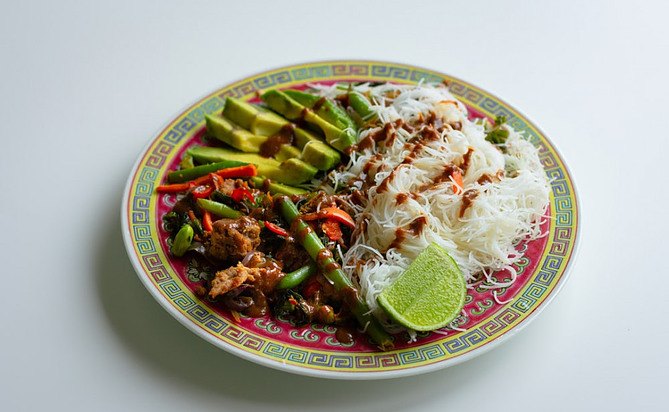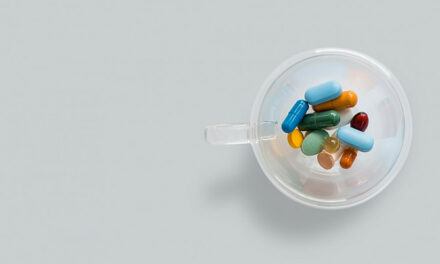Vermicelli and Diabetes, what is the relationship? Is Vermicelli good for Diabetics? Or, it isn’t? We are about to find that out here.
Vermicelli is a regular cuisine item being used worldwide. It is a form of traditional long pasta originating from southern Italy.
To confirm if Vermicelli is good or bad for diabetes, we need to understand what is it, the nutritional content of Vermicelli and how that nutritional content affects blood glucose levels.
In this article, we will also be looking forward to discussing the types of Vermicelli, and which type is good for diabetes. Overall health benefits of Vermicelli and the effects of Vermicelli on diabetic patients will also be covered here.
Let’s start by defining Vermicelli…
What is Vermicelli?
Vermicelli is a thin noodle that resembles spaghetti in appearance. Long, spherical pasta strands that are somewhat thinner than spaghetti and slightly thicker than angel hair pasta.
In Italian, Vermicelli literally translates to “tiny worms”, referring to the pasta’s worm-like shape.
It’s most usually found in dried form, but fresh durum vermicelli can also be found in packages.
In Italy, Vermicelli is broader than spaghetti, although the opposite is true in the United States and other English-speaking countries.
Italian spaghetti is typically 2 millimetres thick, whereas Vermicelli is somewhat thicker, up to 2.3 millimetres thick.
In the United States, spaghetti has a diameter of 0.06 to 0.11 inches, while Vermicelli has a diameter of lesser than 0.06 inches (1.5 millimetres).
In the United States, Vermicelli is a thinner variant of spaghetti. Thus, it’s best cooked with a simple tomato sauce or an oil-based sauce like garlic oil and olive oil. In general, the lighter the sauce, the thinner the spaghetti.
What’s in Vermicelli?
Vermicelli is created using semolina from durum wheat and eggs.
Although the fresh version always contains eggs, the dried version does not. Semolina flour, a roughly crushed flour derived from durum wheat, is commonly used to make dried Vermicelli.
Durum is a solid wheat bred primarily for pasta production, with high gluten and protein content.
The flour’s density produces a firm but flexible dough that keeps its shape good and is great for pasta with an al dente texture. The wheat also contributes to the creamy yellow hue of the pasta.
Below is the nutritional content of Vermicelli:
|
Nutritional Facts |
Amount per 100 grams |
|
Calories |
331 |
|
% Daily Value | |
|
Total Fat 0.1 g |
0% |
|
Saturated Fat 0 g |
0% |
|
Cholesterol 0 mg |
0% |
|
Sodium 0 mg |
0% |
|
Potassium 3 mg |
0% |
|
Total Carbohydrates 82 g |
27% |
|
Dietary Fiber 3.9 g |
15% |
|
Sugar 17 g | |
|
Protein 0.1 g |
0% |
|
Vitamin C |
0% |
|
Iron |
9% |
|
Vitamin B6 |
9% |
|
Magnesium |
0% |
|
Calcium |
5% |
|
Vitamin D |
0% |
|
Cobalamin |
0% |
Vermicelli vs. Angel Hair
Vermicelli is sometimes likened to angel hair pasta, generally called as ‘capellini’, because it is considered a thin noodle (at least in the United States).
Both are made of durum wheat and are long-stretched pasta.
On the other hand, Angel hair is much thinner and cooks faster than Vermicelli.
Vermicelli is more like spaghetti than capellini in terms of appearance.
How is Vermicelli Made?
To make Vermicelli, wet the flour using water and occasionally salt, then knead the dough until it is smooth.
After that, the dough is rolled out and squeezed via small cylinders to make long thin strands that resemble slender worms, which are then dried and packaged.
Finned strands are also available, though straight strands are more common.
Fresh pasta is made in the same way, but whole bread flour, wheat flour, or other grains are more commonly used.
Fresh pasta frequently includes eggs to increase the richness and keep the dough together.
Butter, cream, or tomato-based sauces are sometimes tossed with the finished result. Tossing the pasta before sautéing in olive oil, will allow the sauce to slip off the pasta instead of being absorbed.
Types of Vermicelli
Although Vermicelli has an unappealing name as it translates to “tiny worms”, the extra thin noodles are quick to prepare and pair well with a variety of flavours, as evidenced by their widespread use in meals ranging from breakfast to dessert.
Basically, Vermicelli has two main types, which are as follows:
- Italian (just plain “vermicelli”)
- Asian(aka “rice vermicelli”)
However, there are a few other techniques to separate these strands.
1- Italian Vermicelli
The Italian noodles are created from durum wheat flour and can be used in the same way as any other pasta, including spaghetti, spaghettini, and angel hair.
The only difference is the level of thinness.
(As a bonus, this type of Vermicelli is also used in the renowned boxed “San Francisco Treat,” so you can simply make your custom homemade Rice-A-Roni to cut down on sodium and change up the flavours.)
2- Asian Vermicelli
Asian vermicelli noodles are not known by that term in their native countries. However, they go by a variety of names based on cuisine and provenance.
They have gained popularity in English-speaking regions because of their long and thin shape, which is comparable to Italian Vermicelli.
They are manufactured from rice flour and water, which is why they’re also known as rice noodles (and rice sticks are the same ingredient and taste-wise, but wider and flatter in shape).
Thicker rice vermicelli can be seen in meals like ‘bun bo’ and ‘pho hue’. After soaking in warm water, they are added to stir-fries, soups, noodle salads, and spring rolls.
3- Cellophane Noodles and Glass Noodles
To add to the confusion, there are also cellophane and glass noodles, which are a form of Asian Vermicelli produced from mung beans.
When cooked, the rubbery noodles are clear and have a delicate, chewy feel.
The extremely thin noodles have a neutral flavour that absorbs the tastes of whatever food they’re served with.
These noodles are cooked by soaking them in hot water, boiling them briefly, and then rinsing them in ice water before draining them. Soups can also be used to rehydrate them. They are typically used as a crispy salad garnish when fried.
Cellophane noodles could be prepared from potato starch in Japanese cuisine, although sweet potato starch is commonly used in Korean cuisine.
Cellophane or glass noodles can be used in place of rice Vermicelli if you can’t obtain rice Vermicelli, albeit their texture is softer and more gelatinous.
4- Mexican Fideos
Mexican fideos (Spanish for “noodles”) are quite similar to Italian Vermicelli in size and components (wheat and water), but they are chopped shorter before packaging and frequently roasted in oil for a deeper flavour.
In any fideos dish, ordinary Italian Vermicelli cut into smaller pieces can be used.
5- Falooda Sev
Then there’s “falooda sev”, an Indian cornstarch-based vermicelli! If you don’t have access to an Indian market, you can substitute Asian Vermicelli or make your own at home.
Dried Vermicelli can be found at most supermarkets and specialty stores. Some retailers include fresh versions in the chilled or freezer areas.
Rice and other Asian-style variants are frequently found in grocery stores’ oriental sections or Asian marketplaces. A vast selection of pasta is also available for purchase through catalogues and internet sites.
Can You Mix And Match Different Types Of Vermicelli?
If all you have is a package of Italian Vermicelli, you can use it in place of rice vermicelli, falooda, or fideos sev in a hurry.
You will undoubtedly notice a difference in flavour and texture, but as most of these recipes are already heavily seasoned and saucy, it will not be as noticeable.
Simply follow the package directions, as wheat vermicelli will take longer to cook than rice or cellophane noodles, which can turn to mush after only a few minutes in the pot.
Should Diabetics Eat Vermicelli?
People with diabetes are well aware that they must select foods with a low GI (Glycemic Index) rating. Vermicelli, manufactured from various source ingredients, has a variable GI value.
Sweet potato vermicelli, for example, has a GI of 34.5, while potato vermicelli has a GI of 13.4.
GI value less than 55 foods are low GI meals. Therefore, patients with diabetes can eat Vermicelli.
Despite the fact that it is edible, the carbohydrate percentage of noodles is 84.2%, as shown in the nutrient composition table.
Carbohydrates, which include oligosaccharide, disaccharides, monosaccharides, and polysaccharides, are also known as sugar molecules. Hence, noodles have a high sugar content.
We must take into account both the GI value of blood glucose production level. We must also take into account both the GI and the GL values of blood glucose generation.
Simply said, we must assess both the type and quantity of food consumed.
The GL value is usually less than 10 in most cases.
For example, we know that sweet potato vermicelli has 84.2 grams of carbohydrates per 100 grams and has a GI of 34.5. If we eat 30g of sweet potato vermicelli, the carbohydrate content is 25.26g, thus, GL = 34.5*25.26/100 = 8.94<10, which means that if we consume fewer than 30 grams of sweet potato Vermicelli, the blood sugar effect will be minimal.
Is Vermicelli Good for Diabetics?
Many individuals are unsure if Vermicelli is good for diabetics.
As noted earlier, Vermicelli is pasta prepared from wheat and water. Soups and salads frequently contain it.
There are differing viewpoints on whether Vermicelli is appropriate for people with diabetes. Some say it can lead blood sugar levels to surge, while others say it has a low glycemic level and has no negative effects on blood sugar levels.
People with diabetes can surely enjoy vermicelli noodles. They’re a high-energy carb that’s low in fat and cholesterol.
The noodle takes a long time to digest, preventing quick blood sugar spikes.
A 2-ounce portion contains 214 calories. Squash, quinoa, buckwheat, and shirataki noodles are nutritious choices that provide additional nutrients to your diet.
People with diabetes can consume some vermicelli in moderation, but this does not imply that Vermicelli is a low-glycemic level food that can be consumed in greater quantities. Blood sugar can rise if you eat too much!
Vermicelli is also a common dish and must be counted as a staple food when calculating the daily calorie intake.
For instance, if you consume Vermicelli, you will eat less rice or steamed bread, ensuring a complete carbon water consumption.
Cook the Vermicelli softly to avoid hastening digestion and absorption.
Which Type of Vermicelli is Best for Diabetics?
Vermicelli ‘upma’, rather than typical suji or ‘rava upma’, is healthier for a type 2 diabetics’ diet plan.
On the other hand, Rice vermicelli has a glycemic load of 58, and is considered ‘medium’. This means that, despite the fact that Vermicelli falls within the category of meals that take a reasonable period of time to convert to sugars.
However, because whole-wheat Vermicelli has a low glycemic index of 35, using it in a diabetic diet plan may be preferable.
Additionally, adding additional veggies, and spices, and limiting the quantity of oil needed to make vermicelli upma makes it a healthier diabetic diet alternative.
Calories in Vermicelli Upma (100 gm.)
|
Calories |
164.13 Kcal |
|
Protein |
3.97 gm |
|
Fat |
5.04 gm |
|
Saturated Fat |
0.33 gm |
|
Carbohydrates |
25.03 gm |
|
Fiber |
3.41 gm |
|
Sodium |
2.13 gm |
|
Potassium |
103.77 gm |
|
Calcium |
13.79 gm |
|
Iron |
1.01 gm |
|
Zinc |
0.51 gm |
Vitamins in Vermicelli Upma (100 gm.)
|
Vitamin B2 |
0.01 mg |
|
Vitamin B6 |
0.03 mg |
|
Vitamin B9 |
9.35 µg |
|
Vitamin C |
2.49 mg |
|
Carotenoids |
172.07 µg |
|
Vitamin D2 |
1.75 µg |
When is Vermicelli Bad For Diabetics?
People with type 2 diabetes must go with foods that have a low glycemic index. Vermicelli, made from different ingredients, have a different glycemic index.
For example, if the glycemic index rate is higher than 55 then it’s dangerous for diabetic patients.
The glycemic index of raw rice Vermicelli is 58, whereas the glycemic load of raw rice Vermicelli (about 30 grams) is 14.6. This is not the ideal option for people with diabetes as it is higher than 55.
Simple carbohydrates provide immediate energy.
Rice vermicelli is easily absorbed into the bloodstream due to its high simple carbohydrate content, which means the body does not have to work as hard to absorb it.
As a result, your blood sugar levels will swiftly rise. Choose complex carbs over simple carbohydrates.
The glycemic load, which is determined by the number of carbs present in a serving size of an ingredient, is the easiest way to understand this.
Conclusion
In conclusion, Vermicelli has a high sugar level. However, those with type 2 diabetes can eat it if they eat less.
A diabetic diet must be carefully monitored. Foods with a high glycemic index, or those that are quickly absorbed in the stomach and cause blood sugar levels to vary fast, should be avoided. Furthermore, according to the nutrition table, the main elements of the noodles are carbs, and the nutrition is unbalanced. It’s best to pair some meat with some vegetables.
Overall, we can say that Vermicelli is a good option for someone with diabetes to eat. Considering all the variables, it would still be beneficial to choose whole wheat vermicelli over rice vermicelli.
As always, you should seek advice from your dietitian and health care professional.


















